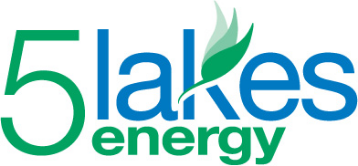By
LANSING, MI — Michigan can comply with the federal Clean Power Plan to reduce carbon emissions without changing anything until at least 2025, the Michigan Agency for Energy and Michigan Department of Environmental Quality announced Tuesday.
The Environmental Protection Agency in August announced a plan to cut carbon emissions by 2030. Michigan specifically has to cut 31 percent of emissions from the state’s 2012 levels by 2030.
The state first announced plans to complywith the Clean Power Plan in September, promising to create a state-based plan to reduce carbon emissions. The first step was completing some baseline modeling to find out where the state stood, which they did through an independent contractor.
“The basic question we asked was if we operated in business as usual without future carbon rule requirements, where does that put Michigan in terms of compliance with that carbon rule,” said Valerie Brader, executive director of the Michigan Agency for Energy.
The state provided what Brader said were conservative assumptions for items like future energy demand, resource prices and energy efficiency.
The baseline model indicated that Michigan could be in full compliance with the new EPA requirements until between 2025 and 2028. But Brader warned that didn’t mean the state could put off action.
“After that time we would need to take action to comply, and obviously any time you need something to be in place for a year you need to start earlier,” Brader said.
Michigan Department of Environmental Quality Director Dan Wyant said with baseline modeling in hand, the next step will be to engage stakeholders around this process. That will start in January. The state will submit an initial plan to the federal government in Sept. 2016 and ask for a two-year extension to go through formal rule making at the state level.
The model’s predictions indicate Michigan will have time to complete that process before any immediate compliance has to be addressed.
“This is great news for the state of Michigan because this allows us to take a broad, thoughtful approach to continuing to improve air quality in the state,” said Wyant. “Unlike many other states, Michigan can continue to choose compliance pathways best suited to protecting the environment and sustaining economic development.”
Brader said that some of the carbon reductions would come from coal plant closures that have already been announced. Michigan has not yet run the models to determine what else must be done to meet the standard after that 2025 to 2028 date range.
“That is likely to include renewable energy but at this point we haven’t run those scenarios,” said Brader, who pointed to falling renewable energy prices.
The modeling does assume natural gas prices, which Michigan Energy Innovation Business Council cautioned should not replace renewable energy.
“We urge Governor Snyder and his team not to rely too heavily on natural gas at the expense of clean, renewable energy like wind and solar when it comes to meeting Michigan’s energy needs,” said EIBC president Liesl Clark. “The initial Clean Power Plan modeling released today by the state of Michigan assumes the lowest-cost scenario for natural gas, which also poses the greatest risk for residential and business ratepayers. Clean energy will reduce that risk should the ‘best-case’ scenario for energy prices fail to materialize.”
Michigan’s two biggest utilities, DTE Energy and Consumers, have said they support the administration’s decision to move toward compliance with the Clean Power Plan instead of fighting it.
Attorney General Bill Schuette, meanwhile, is suing in federal court to stop the Clean Power Plan.
Emily Lawler is a Capitol/Business reporter for MLive. You can reach her atelawler@mlive.com, subscribe to her on Facebook or follow her on Twitter:@emilyjanelawler.
